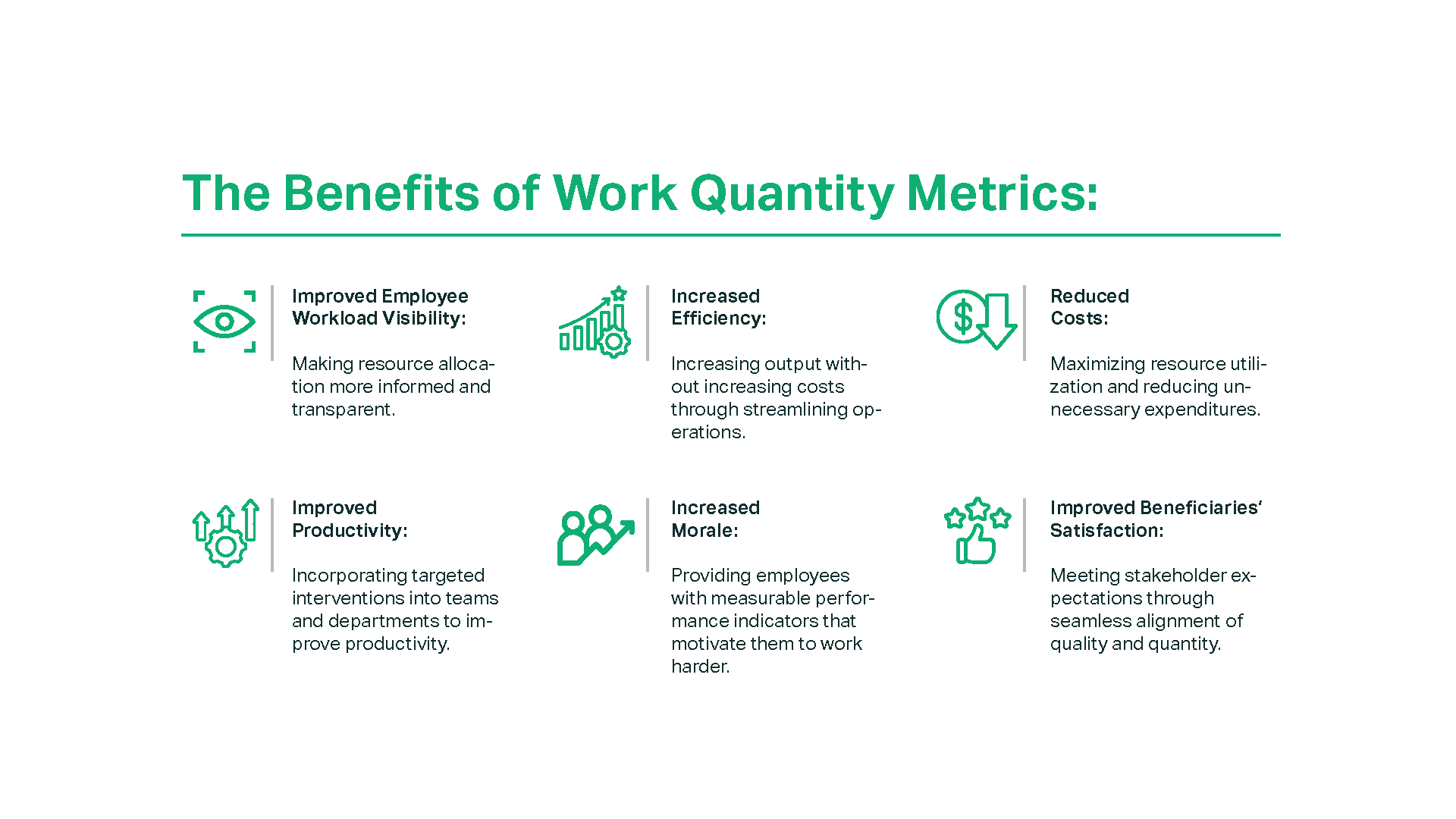In the realm of organizational performance, the Work Quantity Metric stands as a beacon of objectivity, offering a robust framework for evaluating and benchmarking employee, team, and department contributions. But how can this metric not only differentiate, but also improve employee performance, and what advantages does it bring to the fore?
In essence, the Work Quantity Metric measures how much output an organization generates within a specified period of time. Using this metric, organizations can gauge productivity, identify areas for improvement, and allocate resources judiciously.
Aside from its quantification capabilities, this metric offers a wealth of insights. As a diagnostic tool, it highlights potential organizational bottlenecks, delays, and inefficiencies. As well, it provides a discerning lens for evaluating the efficacy of new processes and initiatives.
 Overall, the adoption of Work Quantity Metrics marks a transformative phase for organizations. Besides providing unbiased standards for assessing and comparing contributions across the board, it provides a structured approach to fine-tuning processes and enhancing employee performance. In addition to measuring productivity, this metric contributes to cost reduction, morale enhancement, and enhanced beneficiary satisfaction as part of a pursuit of operational excellence.
Overall, the adoption of Work Quantity Metrics marks a transformative phase for organizations. Besides providing unbiased standards for assessing and comparing contributions across the board, it provides a structured approach to fine-tuning processes and enhancing employee performance. In addition to measuring productivity, this metric contributes to cost reduction, morale enhancement, and enhanced beneficiary satisfaction as part of a pursuit of operational excellence.







